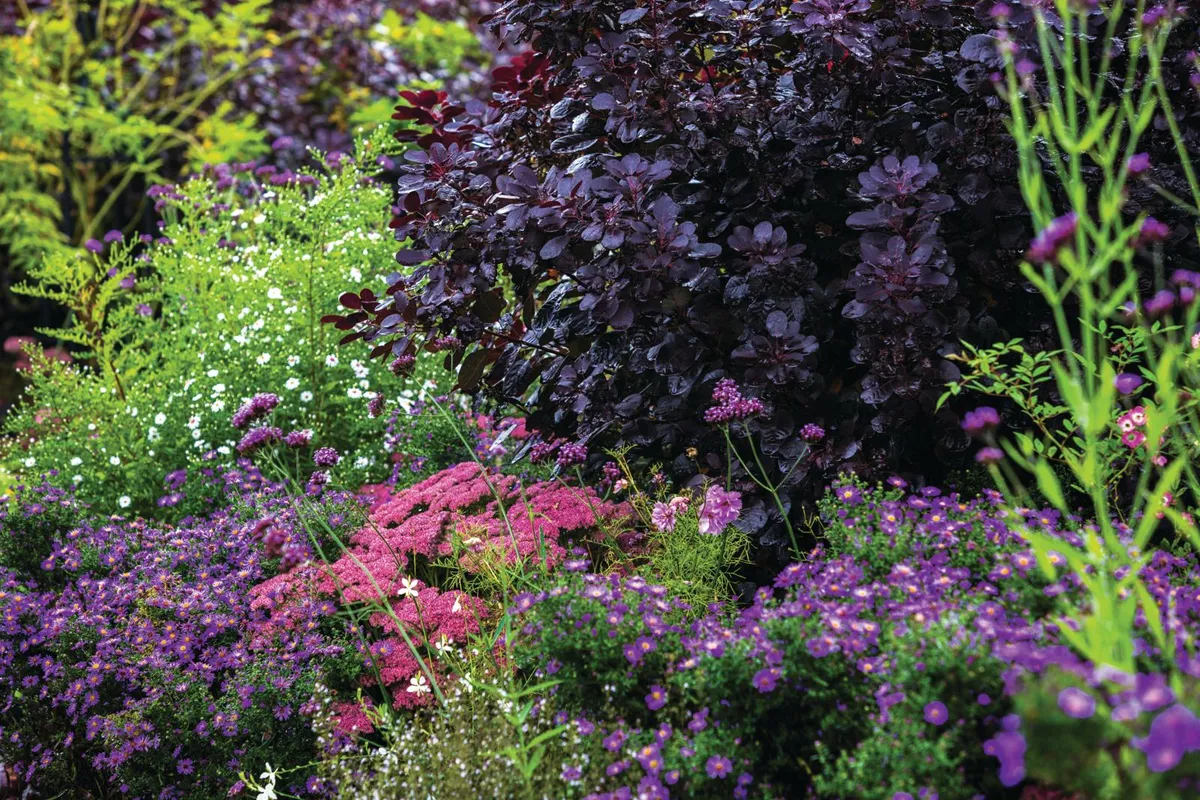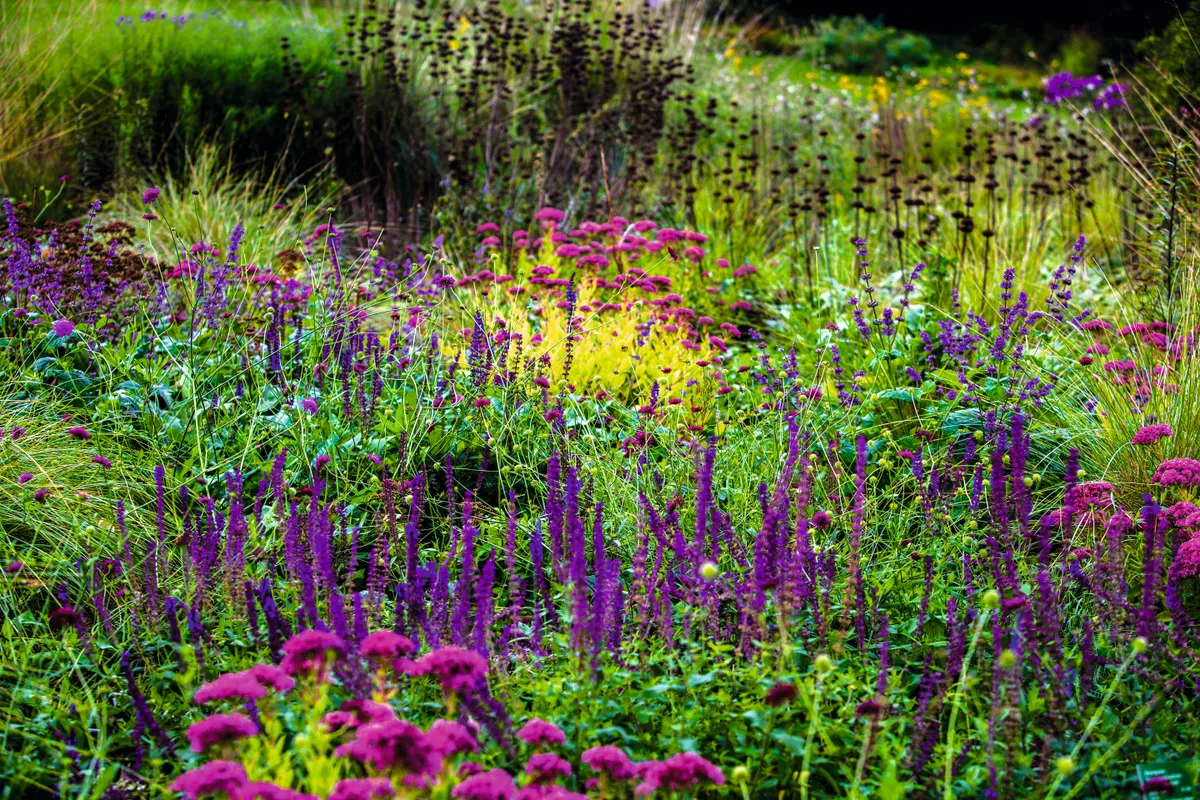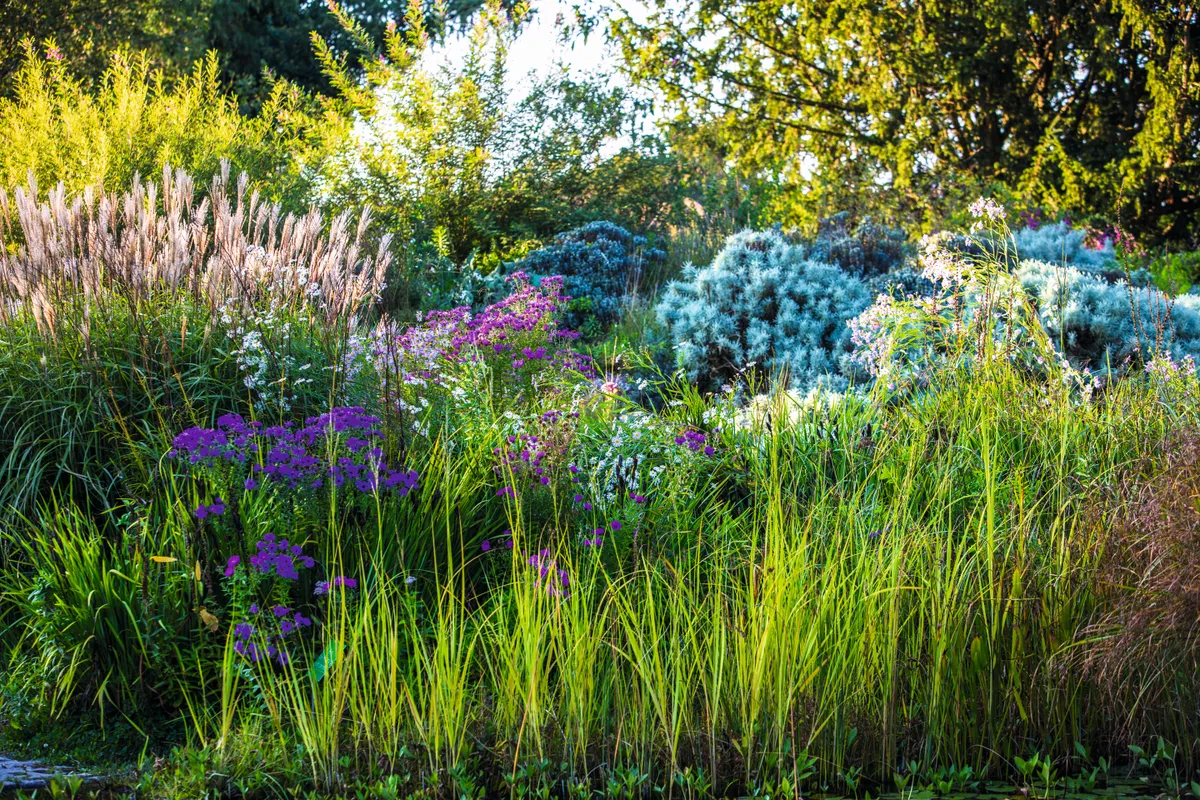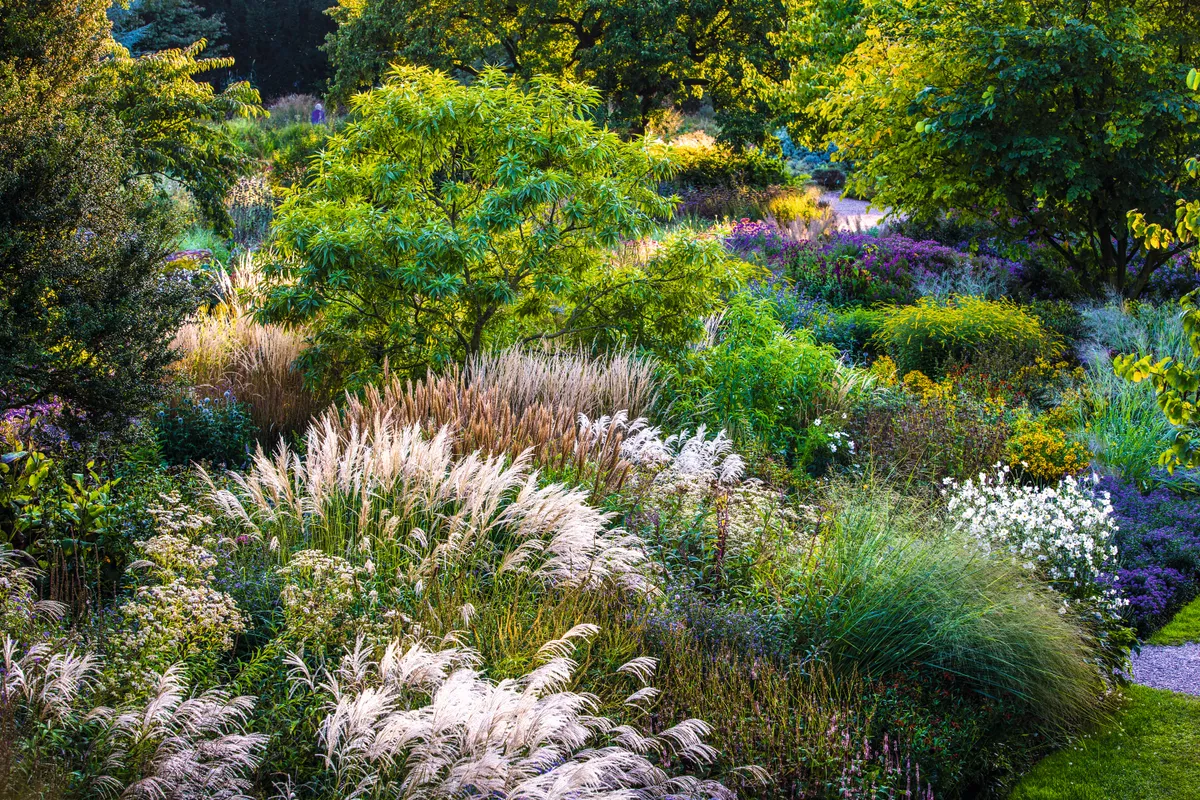Hermannshof in Germany is no ordinary public park. In the early 1980s it became a trial garden to showcase modern planting ideas and found itself at the forefront of the New Perennial Movement. It's easy to think of Hermannshof as merely a nice public park, with lawns, borders and big trees. But those borders are heaven for plant lovers, notable not only for the many wonderful and unfamiliar plants they hold, but for the way those plants are arranged in striking combinations at all times of the year. Even non gardeners might soon notice there's an awful lot going on in those borders. Ranging from high-energy perennial plantings to more naturalistic combinations, Hermannshof's borders have been designed to suit a whole host of different habitats: from pond edges to dry, stony areas and all levels of shade. Below are five planting combinations from Hermannshof to inspire you to experiment with your own garden borders and planters.
Purple prairie

The fresh-green Aster divaricatus (1) is one of the few asters that thrives in light shade and is worth growing for the foliage alone. The pink heads of Eupatorium maculatum (Atropurpureum Group) 'Riesenschirm' (2) set off the blue Symphyotrichum novi-belgii 'Stölzle' (3) an old cultivar that is now a rarity, but vigorous and reliable. Behind this is Calamagrostis brachytricha (4), a good grass for combining with perennials as its height and narrow shape create an excellent backdrop. The tree is Sassafras albidum (5), which turns a fiery orange and yellow later in autumn.
Colour explosion

In one of the oldest plantings at Hermannshof, the vivid pink Sedum 'Herbstfreude' (1) rubs up against the sultry purple-blue of Salvia nemorosa (2). This flowers in June, but will bloom again in September if cut to ground level after flowering, and its rich colour contrasts well against the pink of the sedum and the deep-magenta scabious, Knautia macedonica (3). Behind another clump of Sedum 'Herbstfreude' is Phlomis russeliana (5), which flowers in early summer but retains good, strong seedheads that add interest for the remainder of the year.
Singing the blues

This area is a 'wet prairie' habitat where colourful asters are given free rein. The pale aster-like Boltonia asteroides var. latisquama (1) and the tall grass Miscanthus sinensis (2), provide a neutral background against which the rich colour of the asters can shine. The rich blue-purples and pinks you see here are unnamed seedlings of Symphyotrichum novae-angliae (3), a naturally variable aster species. in front is Spartina pectinata 'Aureomarginata' (4), an extremely vigorous wetland grass. Behind is a dry area, with a silver-leaved Santolina chamaecyparissus (5).
Bright and beautiful

This colourful border has a fertile, moderately moist soil. The Korean feather reed grass Calamagrostis brachytricha (1) gives the whole border a light feel. There's a lively interraction between long-term elements (asters in blues and purples) and short-term elements, such as the non-hardy orange Dahlia coccinea (2), which is an annual addition. The deep-blue aster is Symphyotrichum novi-belgii 'Schöne von Dietlikon' (3), an old and very reliable cultivar from a Swiss nursery, which sits alongside the purple-pink Symphyotrichum novae-angliae 'Rudelsburg' (4).
Feather light

This patchwork of airy grasses and colourful perennials is what greets Cassian Schmidt (garden director) each morning when he looks out of his office window. Grasses, including Miscanthus sinensis 'graziella' (1) and Calamagrostis x acutiflora 'Karl Foerster' (2) provide interest well into the winter. Solid structure is provided by the small tree, x Chitalpa tashkentensis (3), while the colour palette is dominated by the greens and subtle pinks of the grasses with occassional splashes of yellow from Solidago rugosa 'Fireworks' (4) and the white of Anemone x hybrida 'Honorine Jobert' (5).
Go to the Hermannshof website for more details about the garden information on visiting.
Words Noël Kingsbury
Photography Claire Takac
